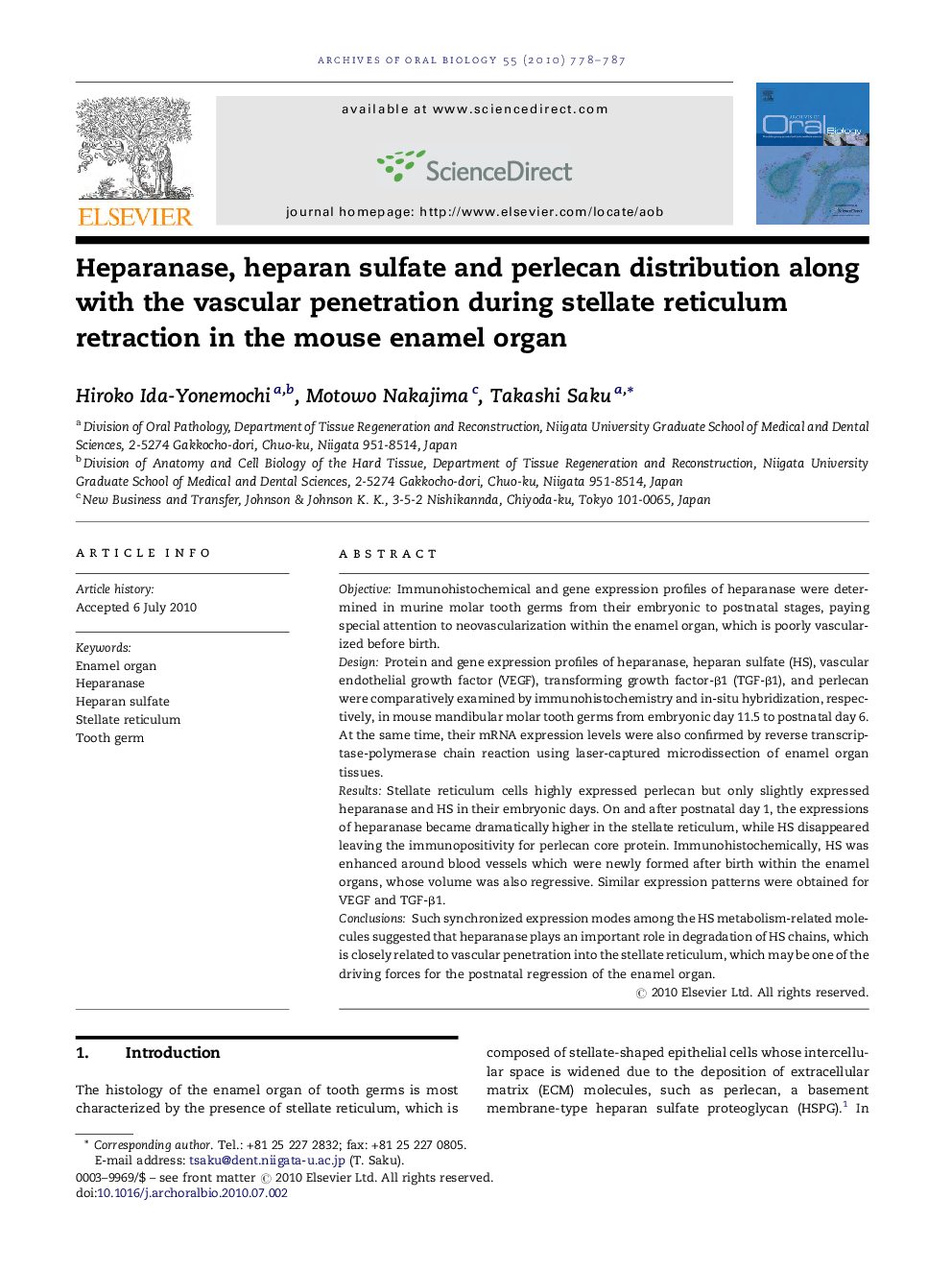| Article ID | Journal | Published Year | Pages | File Type |
|---|---|---|---|---|
| 3121320 | Archives of Oral Biology | 2010 | 10 Pages |
ObjectiveImmunohistochemical and gene expression profiles of heparanase were determined in murine molar tooth germs from their embryonic to postnatal stages, paying special attention to neovascularization within the enamel organ, which is poorly vascularized before birth.DesignProtein and gene expression profiles of heparanase, heparan sulfate (HS), vascular endothelial growth factor (VEGF), transforming growth factor-β1 (TGF-β1), and perlecan were comparatively examined by immunohistochemistry and in-situ hybridization, respectively, in mouse mandibular molar tooth germs from embryonic day 11.5 to postnatal day 6. At the same time, their mRNA expression levels were also confirmed by reverse transcriptase-polymerase chain reaction using laser-captured microdissection of enamel organ tissues.ResultsStellate reticulum cells highly expressed perlecan but only slightly expressed heparanase and HS in their embryonic days. On and after postnatal day 1, the expressions of heparanase became dramatically higher in the stellate reticulum, while HS disappeared leaving the immunopositivity for perlecan core protein. Immunohistochemically, HS was enhanced around blood vessels which were newly formed after birth within the enamel organs, whose volume was also regressive. Similar expression patterns were obtained for VEGF and TGF-β1.ConclusionsSuch synchronized expression modes among the HS metabolism-related molecules suggested that heparanase plays an important role in degradation of HS chains, which is closely related to vascular penetration into the stellate reticulum, which may be one of the driving forces for the postnatal regression of the enamel organ.
